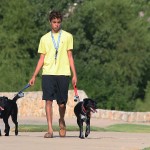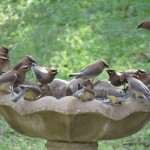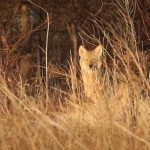Dateline – February 2021 – Carrollton, Texas
It was the late 1980’s the last time we had a cold spell like this one. Temperatures in the metroplex dropped below freezing on February 9 and stay that way for ten straight days. About mid-way through that stretch of frigid days we received a heaping helping of snow and ice just to top it off.
Because it has been so long since our last truly severe winter weather event, it was easy to be somewhat dismissive of the buzz about the coming freeze. Some folks did not tune in at all (me), and were quite surprised by the magnitude of the cold weather.
Our local wildlife did not have that latitude. Many animals sensed the impending challenge and began preparing for it the best they could. One of the first signs many of us noticed were berry eating birds—American Robins, Cedar Waxwings—congregating en masse around fruit bearing trees and bushes. The birds were gorging on berries, stocking up on the calories they would need to endure the extended cold spell.

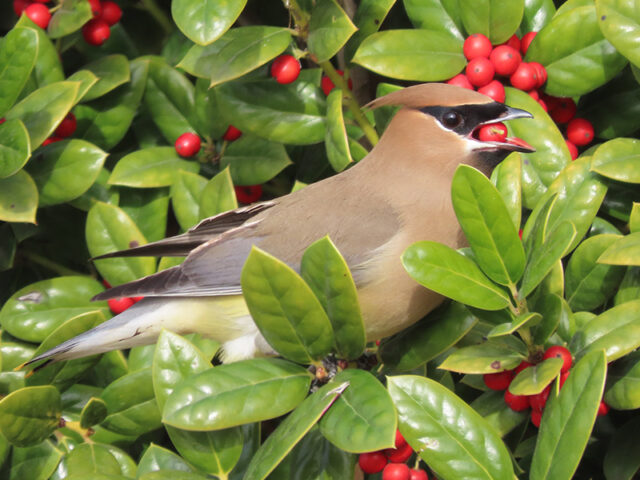
It is thought that the berries lose some of their toxicity after the first frost.
That may explain their sudden appeal to these birds when the temperature turned sharply colder
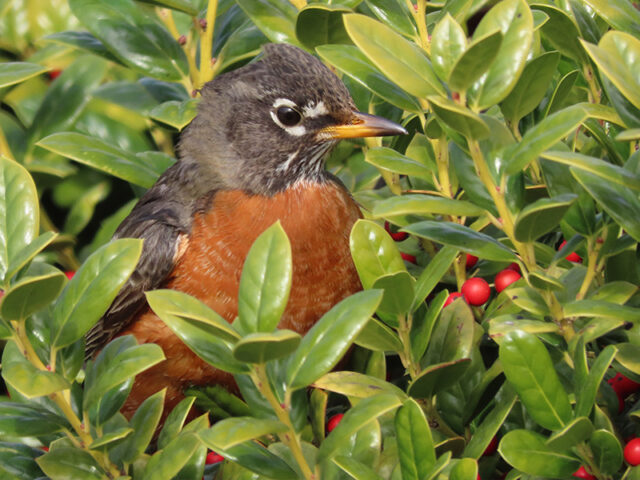
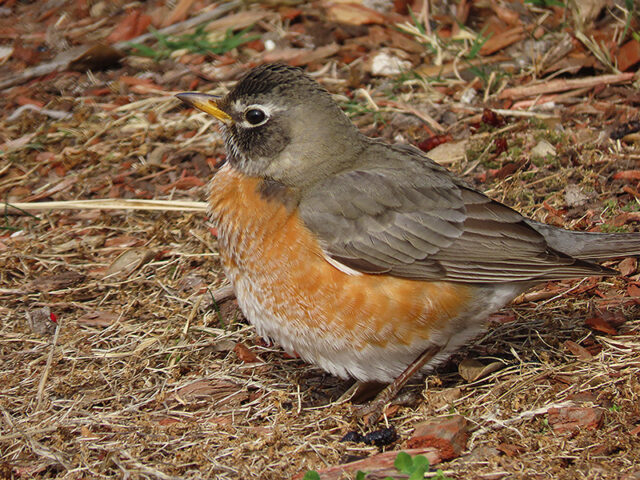

The local Beaver pond began freezing over early in the weather event as well. At first, a closer look was required to notice the thin layer of ice that was forming over the water. Later, after the snows came, the icy nature of the pond was unmistakable. The Beaver family living here in this pond likely rode out the cold spell snug inside their Lodge, which was likely stocked with enough food stores to help them get through.
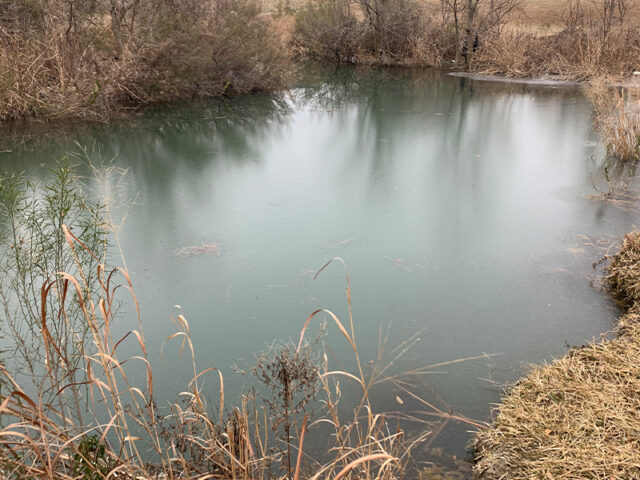
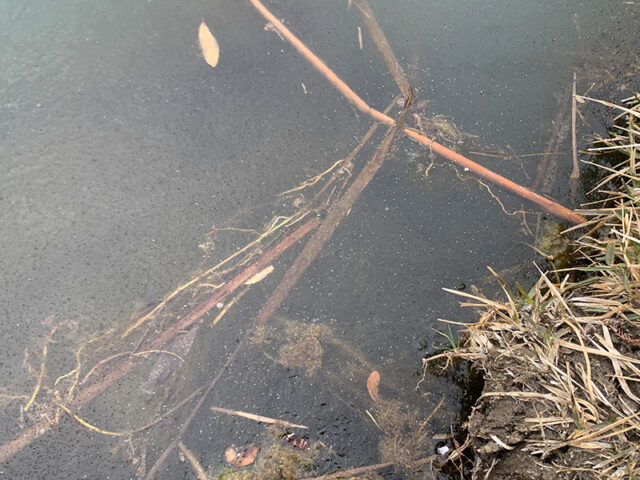

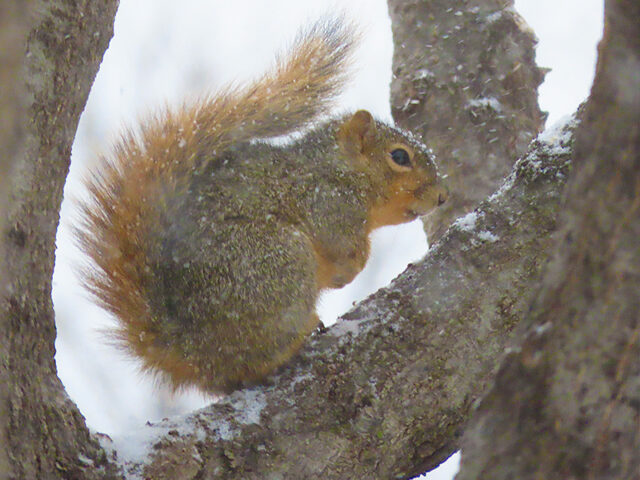
One of the interesting aspects of having fresh snow on the ground is what it revealed about our native urban wildlife by the tracks they left behind. I received many messages from folks all around town asking about what type of critter had passed through their yard in the night. The vast majority of these were Eastern Cottontail and Fox Squirrel tracks, as might be expected.

The Fox Squirrel prints in particular seem to throw people off, especially when the details of the print were lost in snow depth or to melting. It seems that the symmetrical shape and regular spacing of the impressions were being read as deer tracks by many. Its not hard to see how these tracks could be misinterpreted this way, but if the trail ends at the bas of a tree, you can be fairly certain it is a squirrel you are dealing with!

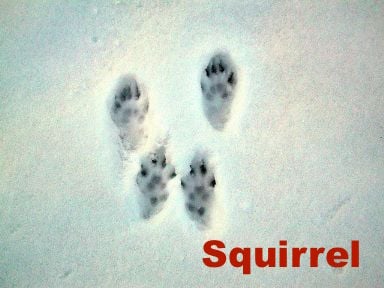
the prints are closer together when
compared to those of a cottontail

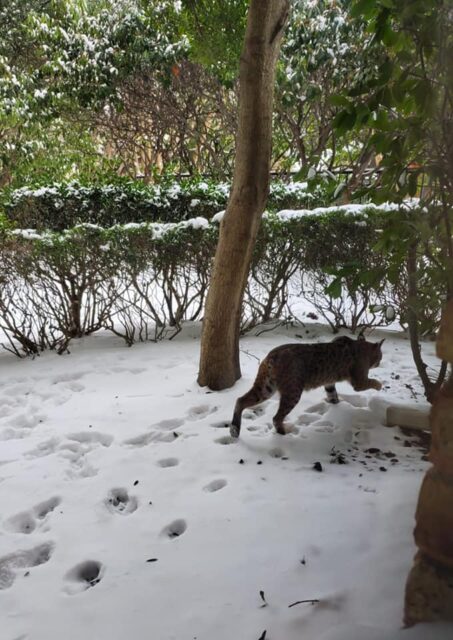
leaving tracks in our neighborhoods
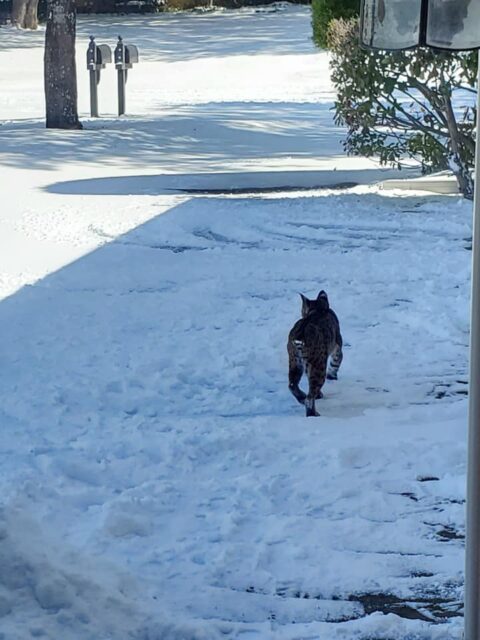
I was also curious to see how wildlife in our more remote corners of the DFW Metroplex were faring in the unusually cold weather. Fortunately, I had several cellular trail cameras stationed in the deep woods near the Trinity River, and they uploaded images to the cloud in near real time. A whole menagerie of North Texas critters were seen out in about, largely showing indifference to the change in temperature and taking the snow in stride. Many of our native mammals range far to the north of Texas, making them well equipped to deal with cold spell much more challenging and extended than this one.

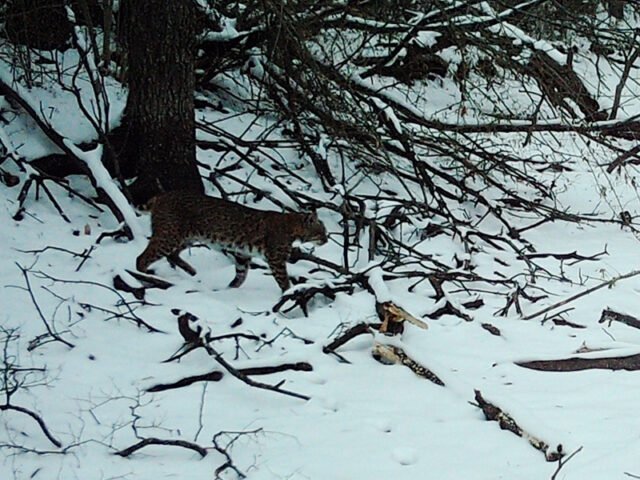

Tragically, not all of our native Texas wildlife fared as well in this brutal cold snap. A case in point was found in my very own backyard. Very early in the season we had a mated pair of Eastern Screech Owls take up residence in oak tree mounted Owl Box.
The first egg was laid on January 17, which as mentioned earlier is significantly earlier than the norm. Ten days later egg number two arrived, and a few days later we got a third egg. The female set about incubating her clutch with diligence and determination. Then the mercury plunged as the temperature dropped below freezing and stayed there.
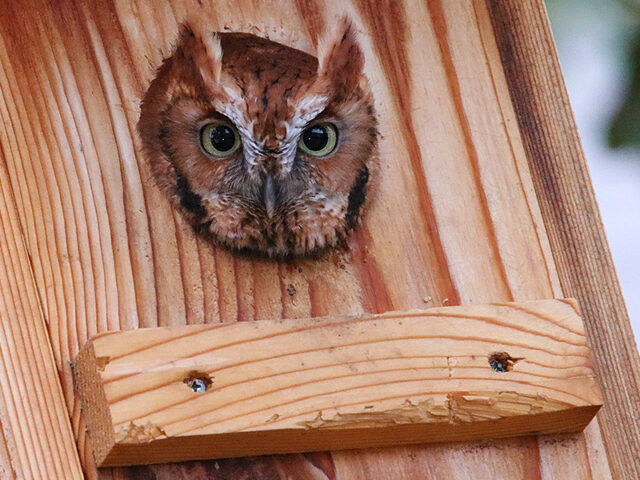
The little owl’s struggles with the cold were obvious as we watched remotely with our nest box camera, but she did her best to stick with it. In the end, six days of below freezing temperatures proved too much for her. At dusk on February 13 she exited the nest box and did not return until dawn—leaving the eggs un-incubated for around 9 hours. It was clear that there was no way the eggs could survive this kind of exposure to the cold.
This behavior continued going forwards. As might be expected, the female was leaving the nest box to hunt. On many ocassions she would return to the nest box briefly with a freshly killed song bird to feed on. These song birds were certainly easy prey, vulnerable in the dark and cold-stunned as there were. Most were nearly as large as the owl—a banquet of calories to help her resist the frigid temperatures. Soon the interior of the nest box was littered from the various prey species the little owl had consumed—Blue Jay, American Robin, Cedar Waxwing, and White-winged Dove.

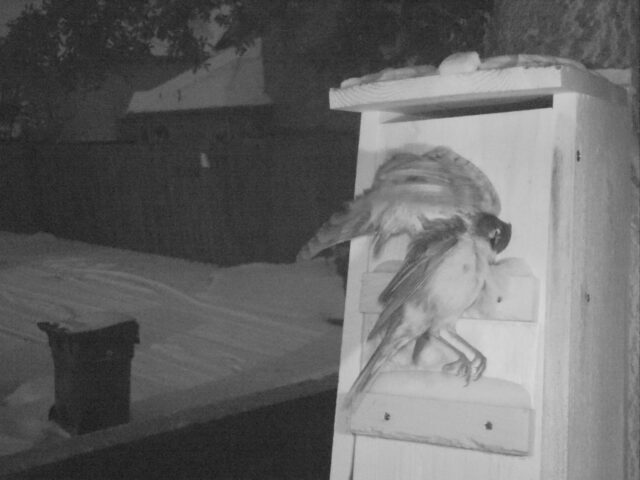
The female owl continued to return to the nest during the day for almost a full week, but even then she made no further effort to incubate her eggs. She must have sensed that something had gone terribly wrong. After it had become clear that the owl pair had finally abandoned the nest box for good, I went out and collected the three small eggs. My goal was to candle the eggs to see just how far the embryos had developed. The eggs were very near full term when the female stopped incubating. I expected to see embryos that were almost ready to hatch when I illuminated the interior of the eggs with a bright light.
ARTICLE – The Complete Beginner’s Guide To Egg Candling
Instead I was surprised to find that the eggs contained NO embryos at all. They had all failed very early, or had been infertile from the start. The poor owl had spent all that time, and endured all the cold weather, for no really good reason.
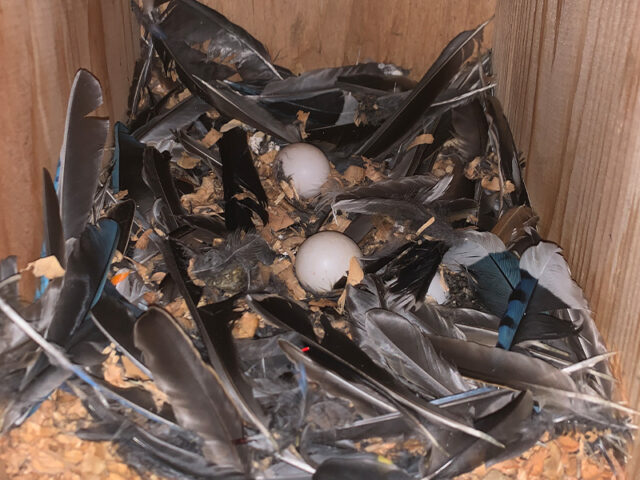
Relief from the cold finally came with the return of the sun on February 19. In less than a day the vast majority of snow and ice had melted away, quickly restoring some semblance of normality. Within just a few days high temperatures would again be approaching 80 degrees. That’s Texas weather for you.
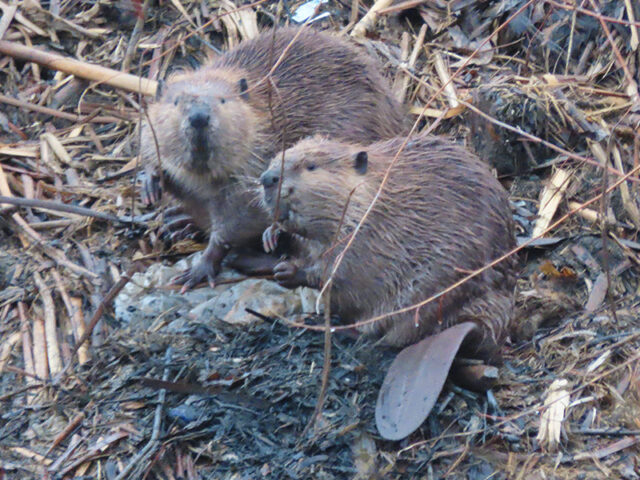
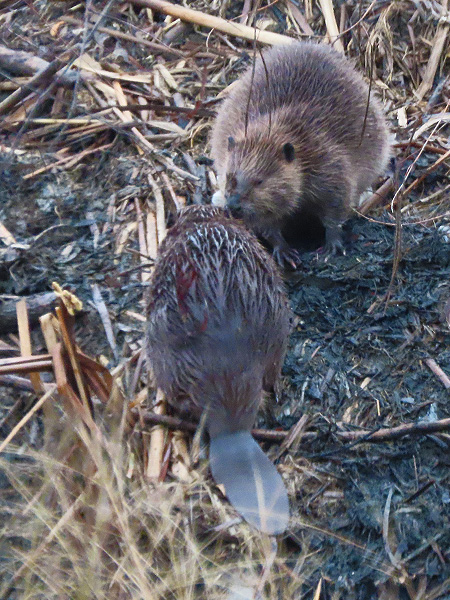

Some of these engagements can get a little rough




